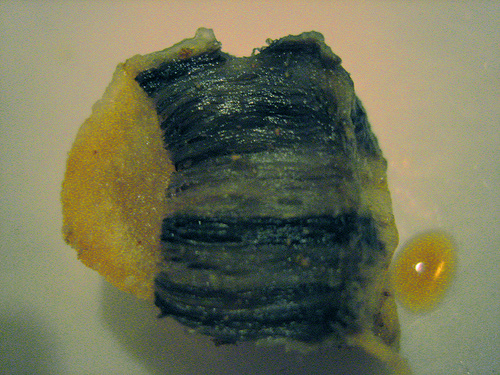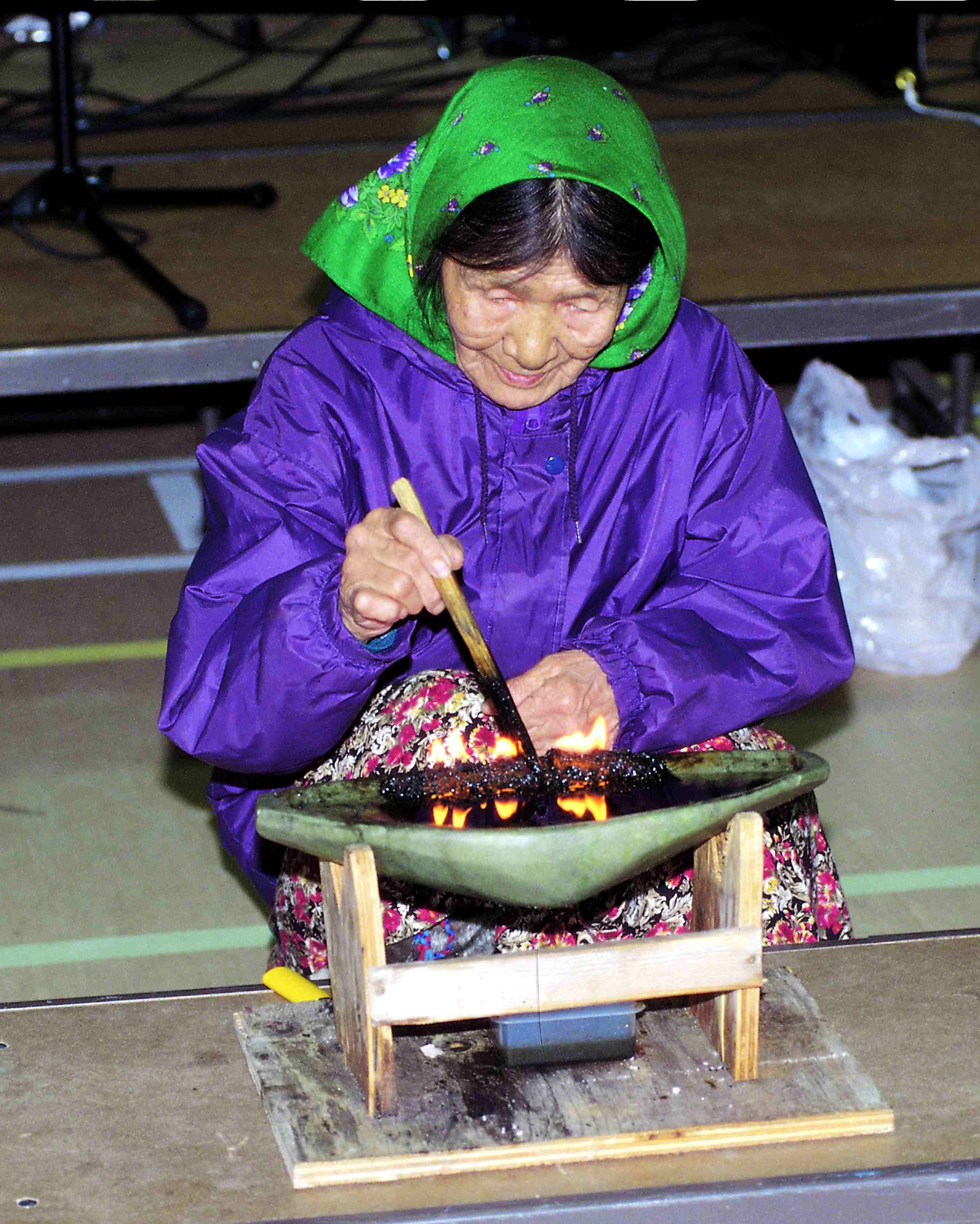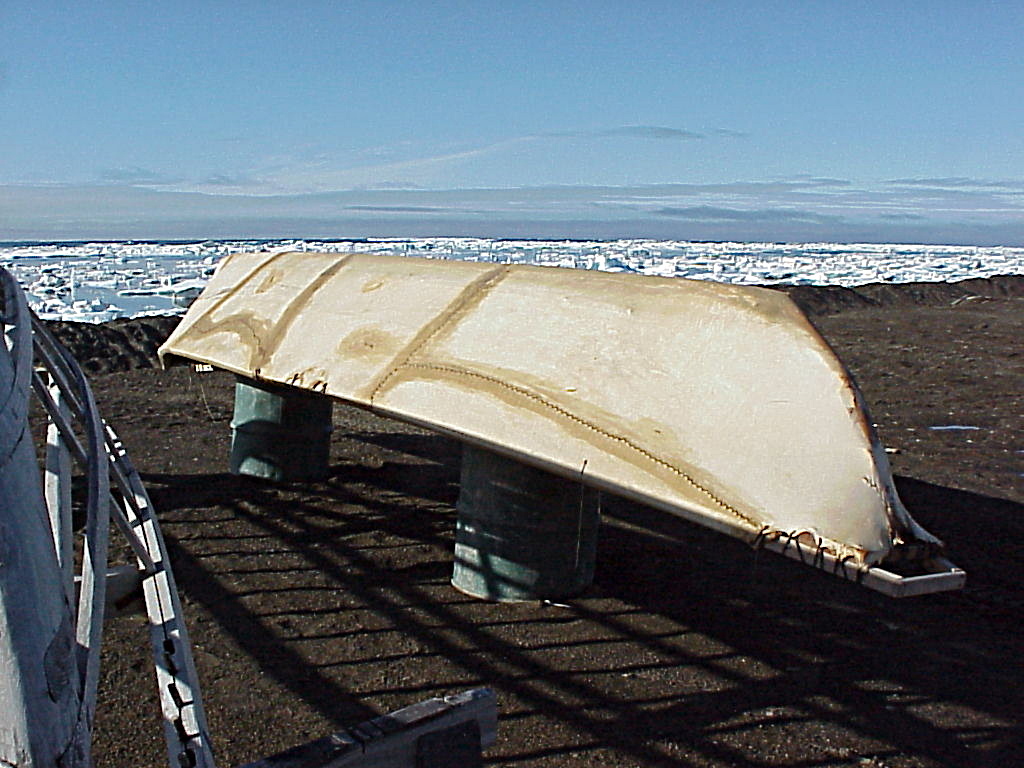|
Erignathus
The bearded seal (''Erignathus barbatus''), also called the square flipper seal, is a medium-sized pinniped that is found in and near to the Arctic Ocean. It gets its generic name from two Greek words (''eri'' and ''gnathos'') that refer to its heavy jaw. The other part of its Linnaean name means bearded and refers to its most characteristic feature, the conspicuous and very abundant whiskers. When dry, these whiskers curl very elegantly, giving the bearded seal a "raffish" look. Bearded seals are the largest northern phocid. They have been found to weigh as much as with the females being the largest. However, male and female bearded seals are not very dimorphic. The only member of the genus ''Erignathus'', the bearded seal is unique in that it is an intermediate. Bearded seals belong to the family Phocidae which contains two subfamilies: Phocinae and Monachinae. The bearded seal possesses characteristics of both of these subfamilies. Fossils first described in 2002 indicat ... [...More Info...] [...Related Items...] OR: [Wikipedia] [Google] [Baidu] |
Earless Seal
The earless seals, phocids or true seals are one of the three main groups of mammals within the seal lineage, Pinnipedia. All true seals are members of the family Phocidae (). They are sometimes called crawling seals to distinguish them from the fur seals and sea lions of the family Otariidae. Seals live in the oceans of both hemispheres and, with the exception of the more tropical monk seals, are mostly confined to polar, subpolar, and temperate climates. The Baikal seal is the only species of exclusively freshwater seal. Taxonomy and evolution Evolution The earliest known fossil earless seal is ''Noriphoca gaudini'' from the late Oligocene or earliest Miocene ( Aquitanian) of Italy. Other early fossil phocids date from the mid-Miocene, 15 million years ago in the north Atlantic. Until recently, many researchers believed that phocids evolved separately from otariids and odobenids; and that they evolved from otter-like animals, such as ''Potamotherium'', which inhabited E ... [...More Info...] [...Related Items...] OR: [Wikipedia] [Google] [Baidu] |
Phocinae
Phocinae (known colloquially as "Northern seals") is a subfamily of Phocidae whose distribution is found in the seas surrounding the Holarctic, with the Baikal seal (''Pusa sibirica'') being the world's only freshwater species of pinniped. What distinguishes them from other phocid seals is the presence of well-developed claws on their front and back flippers. The Phocinae is divided into three extant tribes: Erignathini (represented by the sole extant Bearded seal ''Erignathus barbatus''), Cystophorini (another extant monotypic tribe represented by Hooded seal The hooded seal (''Cystophora cristata'') is a large phocid found only in the central and western North Atlantic, ranging from Svalbard in the east to the Gulf of St. Lawrence in the west. The seals are typically silver-grey or white in color, w ... ''Cystophora cristata''), and Phocini (represented by the rest of the other surviving species in the subfamily). Members of both Erignathini and Cystophorini have 34 chromo ... [...More Info...] [...Related Items...] OR: [Wikipedia] [Google] [Baidu] |
Pinniped
Pinnipeds (pronounced ), commonly known as seals, are a widely distributed and diverse clade of carnivorous, fin-footed, semiaquatic, mostly marine mammals. They comprise the extant families Odobenidae (whose only living member is the walrus), Otariidae (the eared seals: sea lions and fur seals), and Phocidae (the earless seals, or true seals). There are 34 extant species of pinnipeds, and more than 50 extinct species have been described from fossils. While seals were historically thought to have descended from two ancestral lines, molecular evidence supports them as a monophyletic lineage (descended from one ancestral line). Pinnipeds belong to the order Carnivora; their closest living relatives are musteloids (weasels, raccoons, skunks, and red pandas), having diverged about 50 million years ago. Seals range in size from the and Baikal seal to the and southern elephant seal male, which is also the largest member of the order Carnivora. Several species exh ... [...More Info...] [...Related Items...] OR: [Wikipedia] [Google] [Baidu] |
Polar Bear
The polar bear (''Ursus maritimus'') is a hypercarnivorous bear whose native range lies largely within the Arctic Circle, encompassing the Arctic Ocean, its surrounding seas and surrounding land masses. It is the largest extant bear species, as well as the largest extant land carnivore. A boar (adult male) weighs around , while a sow (adult female) is about half that size. Although it is the sister species of the brown bear, it has evolved to occupy a narrower ecological niche, with many body characteristics adapted for cold temperatures, for moving across snow, ice and open water, and for hunting seals, which make up most of its diet. Although most polar bears are born on land, they spend most of their time on the sea ice. Their scientific name means "maritime bear" and derives from this fact. Polar bears hunt their preferred food of seals from the edge of sea ice, often living off fat reserves when no sea ice is present. Because of their dependence on the sea ice, polar be ... [...More Info...] [...Related Items...] OR: [Wikipedia] [Google] [Baidu] |
Theodore Nicholas Gill
Theodore Nicholas Gill (March 21, 1837 – September 25, 1914) was an American ichthyologist, mammalogist, malacologist and librarian. Career Born and educated in New York City under private tutors, Gill early showed interest in natural history. He was associated with J. Carson Brevoort in the arrangement of the latter's entomological and ichthyological collections before going to Washington D.C. in 1863 to work at the Smithsonian Institution. He catalogued mammals, fishes and mollusks most particularly although maintaining proficiency in other orders of animals. He was librarian at the Smithsonian and also senior assistant to the Library of Congress. He was elected as a member of the American Philosophical Society in 1867. Gill was professor of zoology at George Washington University. He was also a member of the Megatherium Club at the Smithsonian Institution in Washington, D.C. Fellow members frequently mocked him for his vanity. He was president of the American Association f ... [...More Info...] [...Related Items...] OR: [Wikipedia] [Google] [Baidu] |
Blubber
Blubber is a thick layer of vascularized adipose tissue under the skin of all cetaceans, pinnipeds, penguins, and sirenians. Description Lipid-rich, collagen fiber-laced blubber comprises the hypodermis and covers the whole body, except for parts of the appendages. It is strongly attached to the musculature and skeleton by highly organized, fan-shaped networks of tendons and ligaments, can comprise up to 50% of the body mass of some marine mammals during some points in their lives, and can range from thick in dolphins and smaller whales, to more than thick in some bigger whales, such as right and bowhead whales. However, this is not indicative of larger whales' ability to retain heat better, as the thickness of a whale's blubber does not significantly affect heat loss. More indicative of a whale's ability to retain heat is the water and lipid concentration in blubber, as water reduces heat-retaining capacities, and lipid increases them. Function Blubber is the primary fat st ... [...More Info...] [...Related Items...] OR: [Wikipedia] [Google] [Baidu] |
Kudlik
The qulliq (seal-oil, blubber or soapstone lamp, iu, ᖁᓪᓕᖅ, ''kudlik'' ; ik, naniq), is the traditional oil lamp used by Arctic peoples, including the Inuit, the Chukchi and the Yupik peoples. This characteristic type of oil lamp provided warmth and light in the harsh Arctic environment where there was no wood and where the sparse inhabitants relied almost entirely on seal oil or on whale blubber. This lamp was the single most important article of furniture for the Inuit in their dwellings. History It is uncertain in which period the seal-oil lamps began to be used. They are part of a series of technological innovations among the Arctic peoples whose introduction and spread has been partly documented. Oil lamps have been found in sites of Paleo-Eskimo communities dating back to the time of the Norton tradition, 3,000 years ago. They were a common implement of the Dorset culture and of the Thule people, the lamps manufactured then showing little changes compared ... [...More Info...] [...Related Items...] OR: [Wikipedia] [Google] [Baidu] |
Dog Sled
A dog sled or dog sleigh is a sled pulled by one or more sled dogs used to travel over ice and through snow. Numerous types of sleds are used, depending on their function. They can be used for dog sled racing. Traditionally in Greenland and the eastern Canadian Arctic the Inuit had the dogs pull in a fan shape in front of the sled, while in other regions, such as Alaska and the western part of Northern Canada the dogs pull side by side in pairs. History Dog power has been used for hunting and travel for over a thousand years. As far back as the 10th century BCE these dogs have contributed to human culture. Assembling a dog sled team involves picking lead dogs, point dogs, swing dogs, and wheel dogs. The lead dog is crucial, so mushers take particular care of these dogs. Another important detail is to have powerful wheel dogs to pull the sled out from the snow. Point dogs (optional) are located behind the leader dogs, swing dogs between the point and wheel dogs, and team dogs a ... [...More Info...] [...Related Items...] OR: [Wikipedia] [Google] [Baidu] |
Umiak
The umiak, umialak, umiaq, umiac, oomiac, oomiak, ongiuk, or anyak is a type of open skin boat, used by both Yupik and Inuit, and was originally found in all coastal areas from Siberia Siberia ( ; rus, Сибирь, r=Sibir', p=sʲɪˈbʲirʲ, a=Ru-Сибирь.ogg) is an extensive geographical region, constituting all of North Asia, from the Ural Mountains in the west to the Pacific Ocean in the east. It has been a part of ... to Greenland. First arising in Thule people, Thule times, it has traditionally been used in summer to move people and possessions to seasonal hunting grounds and for hunting whales and walrus.Umiaks at the Canadian Museum of Civilization Although the umiak was usually propelled by oars (women) or paddles (men), sails—sometimes made from seal intestines—were also used, and in the 20t ... [...More Info...] [...Related Items...] OR: [Wikipedia] [Google] [Baidu] |
Subarctic
The subarctic zone is a region in the Northern Hemisphere immediately south of the true Arctic, north of humid continental regions and covering much of Alaska, Canada, Iceland, the north of Scandinavia, Siberia, and the Cairngorms. Generally, subarctic regions fall between 50°N and 70°N latitude, depending on local climates. Precipitation is usually low, and vegetation is characteristic of the taiga. Daylight at these latitudes is quite extreme between summer and winter due to its high latitude. Near the summer solstice for instance, subarctic regions can experience an all-night period of either civil, nautical, or astronomical twilight (or in the northern reaches full daylight), but without true night, since the sun never dips more than 18 degrees below the horizon. Noctilucent clouds are best observed within this range of latitude. Climate and soils Subarctic temperatures are above for at least one and at most three months of the year. Precipitation tends to be low du ... [...More Info...] [...Related Items...] OR: [Wikipedia] [Google] [Baidu] |
Tupiq
The tupiq (plural: ''tupiit'', Inuktitut syllabics: ᑐᐱᖅ) is a traditional Inuit tent made from seal or caribou skin. An Inuk was required to kill five to ten ''ugjuk'' (bearded seal The bearded seal (''Erignathus barbatus''), also called the square flipper seal, is a medium-sized pinniped that is found in and near to the Arctic Ocean. It gets its generic name from two Greek words (''eri'' and ''gnathos'') that refer to its ...s) to make a sealskin tent. When a man went hunting he would bring a small tent made out of five ''ugjuit''. A family tent would be made of ten or more ''ugjuit''. Fabrication and use After the bearded seal is killed, its fat is scraped off, then the skin is stretched to dry. Finally, women will sew it together to make a tent. Layers can be added by laying heather on top of the outer skin and wrapping another skin around the tent. Franz Boas among the Inuit of Baffin Island, 1883-1884: Journals and Letters, Edited and introduced by Ludger Müller- ... [...More Info...] [...Related Items...] OR: [Wikipedia] [Google] [Baidu] |
Chukchi Sea
Chukchi Sea ( rus, Чуко́тское мо́ре, r=Chukotskoye more, p=tɕʊˈkotskəjə ˈmorʲɪ), sometimes referred to as the Chuuk Sea, Chukotsk Sea or the Sea of Chukotsk, is a marginal sea of the Arctic Ocean. It is bounded on the west by the Long Strait, off Wrangel Island, and in the east by Point Barrow, Alaska, beyond which lies the Beaufort Sea. The Bering Strait forms its southernmost limit and connects it to the Bering Sea and the Pacific Ocean. The principal port on the Chukchi Sea is Uelen in Russia. The International Date Line crosses the Chukchi Sea from northwest to southeast. It is displaced eastwards to avoid Wrangel Island as well as the Chukotka Autonomous Okrug on the Russian mainland. Geography The sea has an approximate area of and is only navigable about four months of the year. The main geological feature of the Chukchi Sea bottom is the Hope Basin, which is bound to the northeast by the Herald Arch. Depths less than occupy 56% of the total ... [...More Info...] [...Related Items...] OR: [Wikipedia] [Google] [Baidu] |






.jpg)

